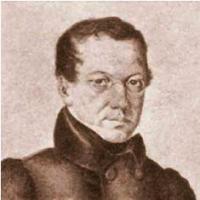You are here
Caspian expedition of Karelin.

Guided Walking Tours Mangyshlak.
“Nature encourages no looseness, pardons no errors”
Ralph Waldo Emerson.
Tours & Activities Mangyshlak.
Karelin Gregory Silich - famous naturalist and traveler (1801 – 1872). In 1832, G.S.Karelin large government headed an expedition to explore the North-Eastern shores of the Caspian sea and was the first researcher of these "desert places".
On four flat-bottomed vessels from Guryev he explored and described the Gulf Dead Kultuk. Mountain Gamanairakty (153 meters above sea level) squad disembarked. "We had wild scenic painting... hand of nature sketched. ...
Bulk stones towered a variety of gigantic cliffs, representing... the ruins of the bell tower, towers, pillars, pyramids...". Behind the mountain Karelin went a little to the South-West at a flat hill.
Then they moved vast space... flat steppe, occasionally covered with sparse shrubs and stunted Haloxylon". There Karelin proceeded by sea to the South-West to the "closed end of Kaidaka" - a narrow Bay of the Caspian sea.
Then the expedition by walking around the Buzachi Peninsula, proceeded to Mangyshlak. Karelin two weeks inspected steep rocky chalk cliffs" small ridge Mangystau like Ustyurt having a smooth surface and only the sea ending with "cliffs, which formed... the ledges and sea seem like a real mountain range".
(This explains that on previous maps here were brought the "Misty mountains".) In early August the work was finished; Karelin made a map of the North-East of the Caspian sea. In may 1836 Karelin continued the survey and inventory of the Eastern shore of the Caspian sea.
The objective of the expedition was also the study of "natural, three kingdoms of nature, the works." Sailing shote (heavy flat-bottomed boat), he moved from Baku to the Cheleken, went down to the South to Gorganskog Bay and in June captured him.
Here, thanks to an experienced conductor and its own diplomatic talent of Karelin managed to converge with the independent tribe of the Turkmen Emudov; its ethnographic characteristics of Imudon retained value to our days.
Moving northward, the expedition explored the Southeast coast of the Caspian sea with nearby Islands. After landing on the beach against the Cheleken, Karelin got to the ridge the Great Balkhan and quite accurately defining the height, put it on the map.
On the Northern shore of the Bay of Krasnovodsk he described the mountain (Krasnovodsk plateau): "They are not a continuous ridge, but form a separate random clumps". At the end of September, the expedition came to a sandy braids, protecting the sea from "scary and mysterious" Gulf of Kara-Bogaz-Gol.
Karelin was the first who dared to penetrate into this "black mouth". Across the narrow Strait with rushing over it in boats first entered the Bay; here his squad was divided into two parties for the inventory North and South shores.
Passing in both directions, the detachment Karelin retreated; Northern party led by Ivan Fyodorovich Blaramberg almost died. "On the Caspian sea there is no pribrezhiy in all respects useless," he decided Karelin (he realized his mistake after many years).
In November 1836, the expedition arrived in Astrakhan. Inventory and research 1832 - 1836, covering the entire East coast of the Caspian sea for over 1200 km In 1840 Eversmann on his expedition materials and data Karelin has precisely defined the boundaries of Ustyurt and described in his work "Natural history of the Orenburg region".
The entire coast of the Gulf of Kara-Bogaz-Gol in 1847 bypassed with accurate shooting Lieutenant Ivan Matveevich Stallions. North shore, according to him, rough and steep; no grass, no trees no.
Along the East rise the bleak mountains, and the South is low and covered with many salt lakes. Stay, even briefly, in the waters of the Kara-Bogaz-Gol creates a sense of great loneliness and longing.
A survey of the southern coast of the Gulf of Stallions finished the actual delineation of the Krasnovodsk Peninsula.
Authority:
Great voyages of the Russian researchers. 1992 Moscow.







